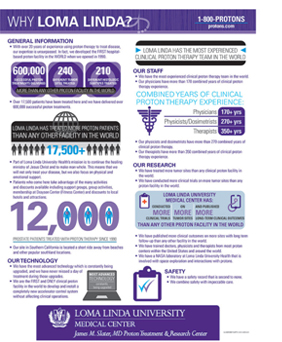
Dear Members:
Happy New Year! As I reflect on the past year, I’m grateful for all the amazing things in my life: God, my family, my friends, and the “ministry” of the BOB, which has connected Deb and me with more than 7,000 incredible people around the world. Our group is held together by a special bond that few people ever experience.
Looking back on 2014, I’m also reminded of the bombshell that hit our family last March when my son-in-law, Deb’s husband, Mark, was diagnosed with an aggressive form of cancer. To say that turned our family upside down would be an understatement. At the same time, this has brought our families closer together and closer to God. Mark has responded well to chemotherapy thus far, in large part, I believe, thanks to your prayers. No one knows what the future will bring, but we are hoping and praying for a positive outcome.
The BOB had a good year in 2014. We continue to grow at a rapid rate and make a difference in the world. We added 750 new members and now have close to 7,400 members from 39 countries representing 17 proton centers in the U.S., Europe and Asia.
Our newsletter reaches thousands every month; not just our members, but hundreds more with whom our members share the BOB Tales. The newsletter is our primary communications vehicle with members and we know from our record high open and click-through rates as well as member feedback that our newsletters are providing value.
This past year we reported on a wide variety of topics relating to prostate cancer and proton therapy including new publications on the benefits of proton therapy, a five-year study that showed 99 percent disease-free survival, a review of the new hypo-fractionation proton treatment protocol, many new developments in prostate cancer diagnosis and prevention, diet and lifestyle issues that may affect prostate cancer, the latest advances in imaging and testing for prostate cancer, and we reviewed the hottest new books on prostate cancer detection, prevention and treatment. We also reported on the National Association for Proton Therapy Annual Conference in Washington, D.C., where the long-awaited 2014 proton patient survey results were released. We celebrated the opening of the 15th proton treatment center in the U.S. and mourned the closing of one of the oldest.
In other proton news, we reported on breakthroughs in treating breast cancer and pediatric cancers, the latter resulting in a dramatic improvement in childhood survival rates.
We provided hundreds of health tips and had fun in our Odds & Ends and Lighter Side newsletter segments with riddles, brain teasers, interesting facts and clean humor. Many tell us it’s the first part of the newsletter they turn to.
This past year we continued to honor our mission of 1) providing support and communications, 2) promoting proton therapy, and 3) giving back. We made great strides in all three areas.
I’m most proud of the job our members have done promoting proton therapy in their communities. We had a record number of requests for our PowerPoint presentation in 2014 and we know it is being used to introduce newly diagnosed men to proton therapy. When new members fill out registration forms, they frequently inform us that they learned about proton therapy from members of our group.
Members were also most generous in giving back this past year. In addition to an extraordinary $ 1 million gift by one of our members, numerous other gifts of all sizes were given for proton research as well as Loma Linda University Health’s Vision 2020 Campaign. Close to 40 percent of our members have contributed to these programs, and many do it every year. I was notified several times this past year that gifts were given in my honor, often to the Marckini Endowed Chair at Loma Linda University Health. Nothing pleases me more than to learn of a gift given in my honor.
Our members have also risen to the occasion when asked to help deal with challenges to reimbursement for prostate cancer proton therapy. Health Care Services Corporation, whose subsidiaries are BCBS in five key states, announced a planned January 1, 2015, policy change that would end reimbursement of prostate cancer proton therapy. We asked you to respond with letters and emails, and you did, in record numbers. HCSC subsequently announced that it is delaying its policy change and is reconsidering its decision. I believe this was, in large part, due to the volume and thoughtfulness of responses from you, our members.
We have a happy, active, and engaged membership, a group of people who took “the road less traveled” when they made their prostate cancer treatment decision and never looked back. I’m proud to be associated with all of you and I’m excited about what we will accomplish in 2015.
Once again, thank you for your support this past year and for helping us with our mission. And, as always, we welcome your feedback and suggestions for future newsletters. Just send an email to [email protected].
Bob Marckini
To print the BOB Tales newsletter or view the newsletter with a larger font size, click here for the PDF file.
in this issue
- NCCN changes position on proton therapy for prostate cancer
- Inflammation: A connection to prostate cancer?
- New study: Exercise tied to prostate cancer survival
- Golf ball sized brain tumor shrunk with protons: Doctors amazed
- Loma Linda University Cancer Center’s infographic earns top honor
- New hope for patients with esophageal cancer
- Members write in about benefits of MRI biopsy procedure
- What you eat and how much can influence prostate cancer and other diseases
- Sugar: Public enemy #1
- An important warning
membership

We added 750 new members in 2014. We have members from all U.S. states and 39 countries. Members represent all operating proton centers in the U.S. as well as four proton centers in Europe and Asia.
news report
NCCN Changes Position on Proton Therapy for Prostate Cancer
The National Comprehensive Cancer Network (NCCN) is a non-profit alliance of cancer centers in the U.S., designated by the National Cancer Institute as comprehensive cancer centers. Its mission is “to advance the quality, effectiveness, and efficiency of oncology care so that patients can live better lives.” Its main activity is the development and publication of practice guidelines for oncology care.
A few months ago the NCCN took the position that “proton therapy was not recommended for routine use, and that research has not shown proton therapy for prostate cancer to be any better than conventional radiation.”
Clinical leaders representing the proton consortium recently met with NCCN to appeal their ruling. Subsequently, NCCN restated their policy, which now reads: “Conventionally fractionated prostate proton therapy can be considered a reasonable alternative to x-ray- based regimens at clinics with appropriate technology, physics, and clinical expertise.”

While this is not a “ringing endorsement” of proton therapy, it is clearly a giant step in the right direction, since private insurers rely heavily on NCCN guidelines when developing their coverage policies. The new wording will be helpful with our advocacy efforts and with patient appeals following insurance denials.
In addition to the good news on treating prostate cancer with protons, advances have also been made with NCCN on the use of proton therapy for treating non-small cell lung cancer. Proton therapy is now listed as an appropriate treatment for non-small cell lung cancer when “more advanced technologies are needed to deliver curative radiation therapy safely.”
NCCN’s commentary on non-small cell lung cancer further states that proton therapy and other advanced technologies “have been shown to reduce toxicity and increase survival in nonrandomized trials.” This is a significant change in its stated policy.
The proton insurance coverage story is far from over. But substantive progress is being made, thanks to the hard work and tenacity of our friends on the proton consortium.
Inflammation: A Connection to Prostate Cancer?
Periodically we ask our good friend, BOB member Pat Greany, Ph.D., a biologist and retired university professor, to write an article for us or abstract a study on a subject of interest to our members. Pat has found some recent articles and studies that suggest there is a connection between inflammation and prostate cancer.
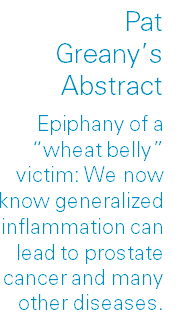
Recent research has shown a significant relationship between diet, inadequate exercise, obesity and the effect of these on chronic inflammation in the initiation and progression of many diseases, including diabetes, arthritis, heart disease and even prostate cancer. So, what contributes to generalized inflammation, and what can we do to prevent or ameliorate it? Should we follow the advice given by Dr. Michael Greger and all become vegans?
One way to get an indication of one’s inflammatory status is to have a simple blood test for C-reactive protein along with your next PSA test. This can give you a heads-up and help you decide whether to take steps to head-off potentially serious consequences.
Some potential causes of inflammation include: Omega-6 fatty acids (e.g., from corn & red meat); alpha linolenic acid (ALA), from flaxseed oil; and “wheat belly” syndrome associated with high glycemic index foods, including wheat. All these have been shown to contribute to prostate cancer, as well as other problems. An excellent review of the role of inflammation in prostate cancer specifically can be found in a recent issue of Histopathology.
The good news is that there are a couple of simple things we can do to reduce the likelihood of experiencing inflammation-exacerbated diseases, including use of Omega-3s from certain types of fish and fish oil and use of aspirin and perhaps other NSAIDs. In addition, well-regarded health guru, Dr. Andrew Weil, has a useful website discussing the hazards of inflammation and provides viewers with guidance for an anti-inflammatory diet.
In the course of reading all these sources of information, it’s easy to become a little confused about what’s really best (e.g., low-fat vs. low-carb diets, giving up wheat and red meat, using fish oil but not flaxseed oil, etc.). The jury still seems to be out on some of these topics. Moderation seems to be a prudent approach generally. Of course, we could all follow the morbid guidance of the famed Dr. Ezekiel Emanuel, and die young! For more on this, see his recent piece in the Atlantic (“Why I hope to die at 75”). For a more positive outlook, read the response by 75-year-old Jacinto Bonilla, (click the link and scroll down to Jacinto's video and story) a crossfit disciple who would be the envy of many 30-somethings!
—Pat Greany, Ph.D.

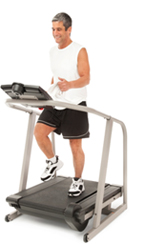
New Study: Exercise Tied to Prostate Cancer Survival
According to a new study, among men with prostate cancer, those who lead active lifestyles have better survival rates than those who don’t. Clearly there are benefits to being physically active, however these new results suggest there are “specific effects also on the survival among prostate cancer patients,” said lead author Stephanie Bonn of the Karolinska Institute in Stockholm.
Previous studies have found links between physical activity and survival in cancer patients, but few looked specifically at prostate cancer, Bonn and her colleagues write in Cancer Epidemiology, Biomarkers and Prevention.
The new study of 4,623 men with early-stage prostate cancer found that those who walked or biked daily for at least 20 minutes after their diagnosis had a 39 percent decreased risk of dying from the disease and a 30 percent decreased risk of dying from any cause, compared to those who were less active.
The results were consistent regardless of the type of treatment the men received for their prostate cancer, Bonn said. “However, our results apply to men diagnosed with localized prostate cancer and only those men who were still alive a number of years after their diagnoses were included in the study.”
Researchers said the association between exercise and prostate cancer could be related to hormones, fat tissue or inflammation. They plan to further investigate the exact mechanisms.
Golf Ball Sized Brain Tumor Shrunk with Protons: Doctors Amazed
Australian Deni Atkinson was 15 years old when a golf-ball-sized tumor was discovered in her brain. The non-cancerous tumor was stunting her growth and causing chronic fatigue.
A seven-hour operation was halted when doctors determined the tumor was inoperable.
Deni flew to the U.S. for proton therapy last year and the results have her doctors back home “amazed.”
Now home in Australia, Deni is giving back by spending her time raising money for medical research.
The article published in PerthNow did not specify in which U.S. proton center Deni was treated.
Loma Linda University Cancer Center’s Infographic Earns Top Honor
Linda University Cancer Center’s (LLUCC) James M. Slater, MD, Proton Treatment & Research Center has been honored with the highest award of excellence by the International MarCom Awards, competing against more than 6,500 entries from the United States and several foreign countries.
LLUCC earned the “Platinum” award for an infographic that highlights the efficacy of proton therapy in successfully treating cancer and allowing people to return to a comfortable quality of life.
According to the infographic, since LLUCC opened the world’s first hospital-based proton therapy facility in 1990, the medical center has delivered more than 600,000 successful proton treatments to more than 240 different tumor sites. During that time the medical center has conducted more clinical trials on more tumor sites and published more long-term clinical outcome studies than any other proton facility in the world.
New Hope for Patients with Esophageal Cancer
Every year, more than 400,000 people worldwide die from esophageal cancer, a highly aggressive malignancy.
Yahoo! Finance recently reported that research being conducted at Loma Linda University Cancer Center has shown that “proton therapy can successfully treat cancer of the esophagus and provide new hope for patients afflicted with the disease.”
The Phase II clinical trial involves the use of chemotherapy with low levels of proton therapy over five weeks. Initial results have been promising and tumor size is significantly reduced after only two weeks according to Dr. Gary Yang, professor of radiation medicine and head of gastrointestinal service at Loma Linda University Cancer Center.
Equally important, the proton option is proving to be much less toxic to patients than the current standard of care that utilizes conventional radiation. Radiation related complications are significantly reduced with the use of the proton beam.
LLUCC is currently enrolling additional qualified patients in the study. More details can be found here.
events
Proton Patient / BOB Member Reunion, Albuquerque, NM
When:
March 8, 2015, 2:00 – 5:00 p.m.
Where:
Sandia Presbyterian Church, 10704 Paseo del Norte N.E., Albuquerque, NM
Details:
Dr. Lynn Martell, D.Min, Director of Special Services at Loma Linda University Health, will discuss exciting news about Loma Linda, new clinical trials with the use of proton therapy, and detailed plans to transform the campus as part of Vision 2020.
Bring your spouse. This is also an excellent opportunity to invite friends who have been diagnosed with prostate cancer. Light refreshments will be served.
More information:
Dr. Lynn Martell at [email protected] or 909-558-7756.
National Proton Conference, Arlington, VA

Registration is open for the 3rd Annual National Proton Conference—Creating a Better Future for Cancer Patients Worldwide. The event takes place March 30 through April 2, 2015, at the Ritz-Carlton at Pentagon City, Arlington, VA. More information will follow.
spotlight on members
Member Feedback
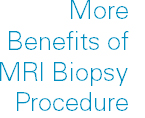
BOB member Greg Kampa (Laguna Niguel, CA) sent an email to Deb in response to last month’s article about MRI scans for prostate cancer testing. Here is an excerpt:
I liked the article on MRI diagnosis of prostate cancer. The technology was developed over 10 years ago, but it is rarely used because, of course, the insurance companies won’t pay for it. Therefore most physicians won’t use it and just do the multi stick biopsy. I continue to work on getting this changed and I will let you know if I make any progress. Here is an article from outside the U.S. which shows further benefits of the MRI procedure.
Member Feedback
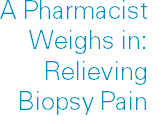
Another member who happens to be a pharmacist sent us an email in response to last month’s newsletter article about MRI scans for prostate cancer testing. Here is an excerpt from his message:
I have never understood why doctors don’t pre-medicate prior to performing a biopsy. I underwent five biopsies over a nine year period before they found my prostate cancer. Although short-lived, biopsies can be uncomfortable. I am a pharmacist and I decided after my first biopsy that there are drugs on the market that can ease some of the pain during a biopsy.
When I was told another biopsy was needed, I asked my doctor to prescribe one tablet of acetaminophen #3 (acetaminophen 300 mg, codeine 30 mg). I took it one hour before the biopsy and had no pain during or after the procedure.
I have since passed this information onto my friends who have had to have prostate biopsies. Their results were the same. Of course there is a caveat: Have someone drive you to and from the exam. If you can’t arrange a ride, take one to two acetaminophen extra strength (Tylenol) one hour before your procedure.
Thank you for a great article about the MRI-guided biopsy. As I mentioned, it took nine years to discover my prostate cancer! This caused my cancer to become more problematic. A MRI-guided biopsy may have cut the time dramatically.


Member Feedback
BOB member Bob Ostrom (Kingsburg, CA) sent an email to Deb in response to last month’s newsletter. An excerpt is below:
Thank you for sharing your husband’s journey. Truly we are made to live “in community” with fellow believers. Your dad, Bob, has blessed us. You both bless each BOB member with your faithful service in putting out the monthly BOB Tales newsletter.
In my family, our daughter’s father-in-law was diagnosed with prostate cancer last year. I asked our son-in-law to speak with his father about proton therapy. As it turns out, a friend had already suggested he contact Loma Linda University Cancer Center. This summer, he had proton therapy and is now doing GREAT.
Member Feedback
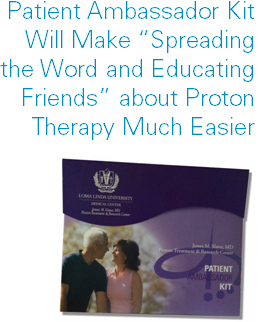
A former LLUCC patient and BOB member sent an email to us requesting LLUCC’s Patient Ambassador Kit that we wrote about in our November 2014 issue.
I attend a prostate cancer networking group. I hear a lot of “horror stories” from men who were treated with other options, particularly surgery. At the meetings, I make myself available to discuss my successful proton treatment (I consider myself cured of cancer) and encourage newly diagnosed men to contact LLUCC before making treatment decisions. The Ambassador Kit you mentioned in your November newsletter will help to explain the advantages of proton therapy at LLUCC and I’ll be able to easily hand them helpful information to bring home to their families.
To request a Patient Ambassador Kit, send an email to Dr. Lynn Martell at [email protected].
Going Above and Beyond to Promote Proton
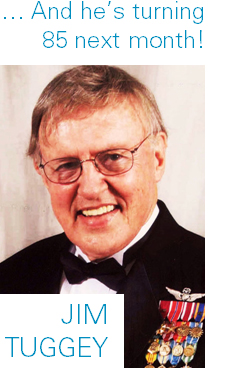
Retired U.S. Army Colonel Jim Tuggey (Trophy Club, TX) will turn 85 on February 4.
Jim had more than 27 years of distinguished service in the Army having served in Korea, West Germany, and Vietnam. He was a helicopter pilot in the service and later joined Bell Helicopter as General Manager and helped establish Bell facilities in Singapore. He also led programs in India, New Zealand, Iran, and the People’s Republic of China.
Jim authored numerous articles on aviation maintenance and safety and won Master Aviator Wings with close to 4,000 hours of flight time in various helicopters and fixed-wing aircraft.
He has been awarded the Legion of Merit (twice), the Bronze Star, the Air Medal (six times), and other honors.
Jim was so thankful for his proton treatment in 1999 he built a website/blog to promote proton therapy for prostate cancer. He has been updating his site ever since (with regular help from his nephew and guest posts from his brother-in-law, also a BOB member treated in 2012).
For many years Jim, who has a wonderful singing voice, has been a member of “The Vocal Majority Chorus,” a group of 230 men who compete nationally in barbershop harmony events. The group broke all the records for Gold Championship medals.
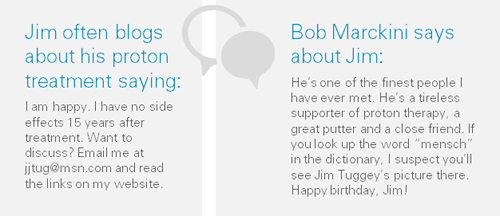
Member Pens Second Novel
In our April 2013 BOB Tales newsletter, we introduced you to BOB member George Jehn. George flew as a pilot for Eastern Airlines for 18 years, from 1970 until 1988, on the Boeing 727, Douglas DC-9, and Airbus A-300 jets. Then he left Eastern to work for another large airline. During his time at Eastern, George spent six years as an elected pilot representative from Eastern’s New York pilot base and was simultaneously a six-year member of the Board of Directors of the Air Line Pilots Association (ALPA).
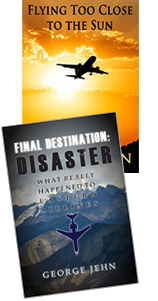
George was treated with proton therapy for his prostate cancer in 2005. Ten years later, he is doing very well. In 2013, George wrote his first novel, titled, “Flying Too Close To The Sun,” a mystery about airline pilots in the throes of serious financial problems who discover a purported “easy way out” of their dilemma. It has received rave reviews.
George’s second book was released last year. The book, titled, “Final Destination: Disaster. What Really Happened to Eastern Airlines,” informs the public, for the very first time, what actually precipitated the controversial sale of Eastern Air Lines to Frank Lorenzo’s Texas Air Corporation, which led to its demise.
Both books are available at most major bookstore outlets. They are also available in paperback, Kindle, and Nook e-book formats on www.amazon.com and www.barnesandnoble.com.
making a difference by giving back

75-Year-Old Ski and Snowboard Instructor Gives Back
Ted Smathers was treated at Loma Linda University Cancer Center in 2005. Since then, Ted and his wife, Shaunie, have contributed regularly to Loma Linda University Health for proton research. At the end of last year, they changed their estate plan and they are leaving a significant percentage of their estate to the Dr. James M. Slater Chair and the Robert J. Marckini Chair for proton therapy research.
Bob Marckini spoke with Ted last month, just before Ted left for a week of ski instruction at Vail, Colorado. No, he wasn’t the student, he’s the instructor. Ted, now 75, still teaches skiing and snowboarding and plans to do so for many years to come. “My teaching schedule is quite full,” he told Bob. “My PSA is low and I feel great. I hope LLUCC doesn’t mind waiting for the estate gift—I plan to be around for a long time.”
As we’ve stated in the past, part of our mission is to give something back. Hundreds of our members do this every year by making gifts and/or by changing their estate plans to make gifts on their passing.
When Bob spoke with Ted, he said, “The announcement of your two planned gifts for proton research was one of the best Christmas presents I received this year.”
Support Proton Research
Make a Future Gift :
Contact Todd Mekelburg at the Office of Planned Giving at Loma Linda University Health at 909-558-4553 or email [email protected].
Donate to the Marckini Chair:
- Send a check made out to “LLUCC Proton” to Loma Linda University Health,
Office of Philanthropy, P.O. Box 2000, Loma Linda, CA 92354.
Memo line: “Marckini Chair.†- Donate online. Click the “Make a Gift†link.
- Call Elvia DeHaro at 909-558-5010.
Other Ways to Give:
Contact Aaron Laudenslager at the Office of Philanthropy at Loma Linda University Health at 909-558-3284 or email [email protected].
health
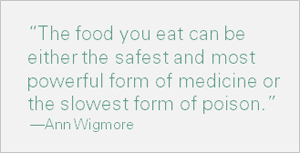
What You Eat and How Much Can Influence Prostate Cancer and Other Diseases
According to a recent Johns Hopkins Health Alert, what we eat and how much can contribute to our risk of developing many of the chronic diseases that occur with age. Disorders of glucose and fat metabolism, as well as inflammation and disorders of the immune system are all linked to diet according to the report. Higher risks of chronic aging diseases, such as cardiovascular disease, hypertension, diabetes, sexual dysfunction, and prostate cancer can be a result of an unhealthy diet.
Many studies have shown that people who eat a traditional western diet experience a diagnosis and death rate from prostate cancer four to five times higher than in Asian countries. Researchers believe that both the types and quantities of food consumed in the west contribute to these statistics. Fast food staples, such as burgers, fries, chips, and soda, for example, add calories and excessive amounts of sugar, sodium, saturated fat, and refined grains.
According to Johns Hopkins:
It may be that these foods promote the development of chronic disease through metabolic and hormonal changes that favor excess cell growth and reduce normal cell death. It’s this uncontrolled cell growth that’s a hallmark of cancer. Alterations in nerve pathways, a reduced ability of the immune system to fight cancer, and increased inflammation also compromise male health.
The article further reminds us that poor diet choices cause other problems such as obesity, lipid disorders, and hypertension, which can lead to cardiovascular disease as well as prostate diseases.
Hopkins recommends replacing the typical western diet with a diet that includes antioxidant-rich fruits and vegetables, fish, avocados, olive oil, nuts, and other foods containing monounsaturated and omega-3 fats.

Sugar: Public Enemy #1
A syndicated article with this title was picked up in newspapers nationwide. The opening paragraph catches your attention:
Dean Schillinger is a primary care physician at San Francisco General Hospital. He first came to the city in 1990 at the peak of the AIDS epidemic. “At that point, one out of every two patients we admitted was a young man dying of AIDS,” he says …
“Today, that same ward is filled with diabetes patients.”
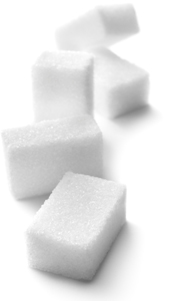
These patients are having their limbs amputated, they are on dialysis, and they are suffering the ravages of diabetes in the prime of their lives.
“There is too much added sugar in our diets,” says Dr. Schillinger. The average American consumes the equivalent of 19.5 teaspoons a day in added sugar. “The only major change in the diet that explains the obesity epidemic is this steep rise in added sugar consumption that started in the 1980s,” says Laura Schmidt, Professor of Health Policy at UCFF Medical School and part of the research team.
A team of researchers at UCSF reviewed 8,000 studies and research papers and found strong evidence that the consumption of too much added sugar overloads vital organs and contributes not just to Type 2 diabetes, but also to heart disease and liver disease.
More Findings:
- Added sugar is hiding in 74 percent of packaged foods, including some foods thought of as healthy, such as yogurt and salad dressing. Overloading on fructose can damage your liver, just like too much alcohol. One 12 ounce can of soda a day can increase your risk of dying of heart disease by one-third.
- “Natural sugar in moderation can be part of a balanced, healthful diet and lifestyle—and has been safely used by our grandmothers and their grandmothers for decades,” said Andy Briscoe, president and chief executive of the Sugar Association. However, the American Heart Association urges cutting back on sugar dramatically.
Pneumonia: Higher Risk for Seniors
According to the Center for Disease Control, pneumococcal pneumonia affects roughly 900,000 Americans every year. “It is a life-threatening infection of the lungs, which is caused by bacteria that live in the upper respiratory system. The disease causes symptoms such as cough, fever, chills, fatigue, and/or difficulty breathing. Symptoms can last weeks or months.”
Brandpoint Health and Wellness reported that adults over age 50 are considered at increased risk for pneumonia, especially those with underlying health problems such as COPD, diabetes, asthma, congestive heart failure, and sickle cell anemia. You are at even higher risk if over the age of 65.
It is important to take steps to help prevent pneumonia including regular hand washing and immunization.

Dirty Hotel Rooms
In our November 2014 BOB Tales we reported on a study that found MRSA and E. Coli bacteria in the seatbacks of commercial airliners.
Recently, NBC Today Show’s Rossen Reports conducted an investigation at five of the top hotel chains in the U.S. After maids had cleaned the rooms, a bacteria expert microbiologist from the University of Arizona applied test swabs to various areas of the rooms and the findings are eye-popping.
The cleanest areas were the light switches. But just about all of the phones were teaming with bacteria. An ultraviolet light found stains, not visible to the naked eye, all over the rooms, including sofas and curtains.

The single dirtiest thing was the TV remote control. All of the remotes in every room tested registered “sky-high levels of bacteria, with one delivering a 498 reading, the highest reading ever measured.” According to Dr. Luisa Ikner, the microbiologist, “That’s how a lot of infectious viruses are transmitted,” she said.
Colonies of E. coli were also found on one TV remote. “This indicates there was fecal contamination on the remote,” Ikner explained. Someone likely used the bathroom and didn’t wash their hands. Even worse, another TV remote tested positively for MRSA, a highly contagious bacterium.
Ikner offered three suggestions: 1) Wash your hands, 2) use hand sanitizer, and 3) wipe down surfaces with a disinfectant wipe.
Series: Top 20 Most Common Health Questions (and Answers)
Last summer, we began a series on the top 20 most common health questions (and answers) from Business Insider Magazine. On the following page is the eighth question on the list.

Do eggs raise cholesterol levels?
Short answer: No
Although egg yolks are a major source of cholesterol—a waxy substance that resembles fat—researchers have learned that saturated fat has more of an impact on cholesterol in your blood than eating foods that contain cholesterol.
“Healthy individuals with normal blood cholesterol levels should feel free to enjoy foods like eggs in their diet every day,” the lead researcher from a 25-year University of Arizona study on cholesterol concluded.
the book
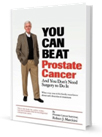
We have 209 reader reviews on Amazon—more than any other book in the top 50! Here is an excerpt from what one reader recently had to say:

A great book that is a must read for all new PCa sufferers. It inspired me to write “An ABC of Prostate Cancer in 2015.”
—Alan Lawrenson
Bob Marckini’s book inspired me to have proton therapy to treat my prostate cancer. This is a must read book for those newly diagnosed with prostate cancer. This book also inspired me to tell my own story. My book, “An ABC of Prostate Cancer in 2015,” is now available. It tells my journey over four continents to find the best cure.
Did you find Bob’s book helpful?
Please help us to spread the word and educate others about proton therapy. If you found Bob’s book to be helpful in making your proton treatment decision, please post a review on Amazon.
Once you are logged into your Amazon account, click here and click the “Create your own review” button. NOTE: Reviews can be just a few sentences—it only takes a few minutes. And, don’t forget to rate the book from 1 to 5 stars!
Don’t have an Amazon account? No problem. Sign up here—it’s free.
More Information/Where to Buy the Book
- Paperback: $19.00
- Kindle: $9.99
- Nook Book: $9.99
- Apple iBook: $9.99
The paperback version of You Can Beat Prostate Cancer is available online at Amazon, Barnes & Noble, and LuLu Press. Proceeds help fund BOB efforts and support proton therapy research.
Ask about our bulk discount for hard copy books for anyone interested in spreading the word about proton therapy: [email protected]
odds & ends
Warning: Battery Fires!
Nowadays, just about everything we use is powered by batteries: Cell phones, iPads, toys, TV remotes, calculators, flashlights, portable devices, clocks, watches, and more.
This may be one of the most important articles you will read this year. It is a warning about fires caused by improperly disposed of 9-volt batteries.
Nine-volt batteries have both terminals on the same plane. So, while in your trash can, it’s easy for the circuit to be completed when the battery comes in contact with a conductor, such as aluminum foil, a tin can, and especially, steel wool. Watch this video. It will open your eyes.

The solution is to prevent the circuit from being completed when batteries are disposed. This can be done by putting tape over the terminals. Electrical tape is recommended in the video, but almost any kind of non-conductive tape (e.g. masking tape) can be used. This is very easy to do; it takes only seconds; and it could possibly prevent a fire in your home or business. You may want to share this information with family and friends.
Bob Marckini says:
I disagree with one thing on this video. The commentator says, “The problem is only with 9-volt batteries. ” While 9-volt batteries have the most potential for causing a fire, standard batteries with terminals on both ends, i.e. on different planes, can also cause a fire if the circuit is completed. It’s not as easy, but certainly possible. Aluminum foil or steel wool could easily wrap around the battery and complete the circuit. And if there are combustibles present—and there almost always is—there is a chance of a fire.

Did You Know?
- Nine out of every 10 living things live in the ocean.
- The banana cannot reproduce itself. It can be propagated only by the hand of man.
- Airports at higher altitudes require a longer airstrip due to lower air density.
- The University of Alaska spans four time zones.
- The tooth is the only part of the human body that cannot heal itself.
on the lighter side
Last Month’s Brain Teaser/Riddle
How many proton treatment centers are there around the world?
We gave a hint: It’s more than 25.
Answer: According to the Particle Therapy Co-Operative Group (PTCOG), a non-profit organization for those interested in proton, light ion and heavy charged particle radiotherapy, there are a total of 45 proton treatment centers in the world. Not all of them are high-energy proton centers capable of delivering a beam deep enough inside the body to treat prostate cancer, but most are. And not every center has treatment gantries, but most do.
The countries with the most proton treatment centers are the U.S. with 16, Japan with 9, Germany with 4, and Italy with 3. Other countries with proton treatment centers include the Czech Republic, England, France, Poland, Russia, South Africa, and Switzerland. In addition to these 46 proton treatment centers, PTCOG reports the existence of eight carbon-ion particle treatment centers.
View the entire list along with additional information about these particle therapy treatment facilities.
It’s hard to imagine, when looking over this list of proton treatment centers and the world-renowned medical centers building them, that some still consider proton therapy experimental and investigational. And, we can’t help but wonder if Dr. James Slater at Loma Linda University Cancer Center has any idea what he started 30 years ago?
Winner: BOB member Toby Frey (Oxford, MD), a retired pilot, was diagnosed with prostate cancer in November 2012 after a rapidly rising PSA (4.5 - 6.9 in 14 months). His urologist, a surgeon, wanted to operate. Toby agreed to the operation, which was scheduled for the next month. Meanwhile, he continued to research alternative treatment options. During that process, Toby got “cold feet” and canceled the operation, rescheduling it for the following month so that he could continue his research.
“I sent an email to a couple of friends, looking to find someone who may have information on alternative treatment options,” Toby told us. “Almost as soon as I hit the 'send' button, I got a phone call from a friend in Florida who knew two guys (both are BOB members) who had been treated at Loma Linda University Cancer Center with proton therapy. He gave me their phone numbers, and well … the rest is history.”
Toby began proton treatment in March 2013. During treatment, he led an active life—something he’s always been used to. “I still fly around 100 hours a year doing flight survey work. This involves flying as low as 100 feet, counting migrating shore birds to flying at 6 to 8,000 feet counting resident geese, migrating waterfowl, muted swans, or looking for gypsy moth damage to hardwood trees,” Toby told us. He also flies off the coast of Maryland and Delaware and counts fishing boats using the artificial reefs in Delaware Bay and the Atlantic Ocean. Toby has clocked more than 12,000 hours of flying. He’s also an avid fisherman, sailor, and hunter. “My favorite fishing is salt water fly fishing,” Toby said. Proton therapy didn’t get in the way of that. While in treatment, Toby made friends with another patient and the two fished about two times each week.

Toby finished his treatment in early May. By the end of the month, he had his FAA physical approved and was flying commercially again, continuing his survey work for Maryland, Delaware, and New Jersey State Departments of Natural Resources, Forestry, Fisheries, and Universities.
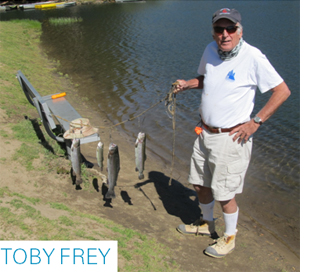
“I feel like I never had treatment for cancer.
My one year PSA was .233.” Toby is also happy to report that he is feeling well and enjoying life with his wife of 40 years.
Congratulations, Toby —your signed copy of Bob's book is on the way!
New Brain Teaser/Riddle
This is an easy one: Three boxes are all labeled incorrectly, and you must get the labels right. The labels on the boxes read as follows:

To gain the information you need in order to move the labels to the correct boxes, you may remove a single item from one of the boxes. You may not look into the boxes, nor pick them up and shake them.
Can this be done? If so, how? If not, why not?
Answer Next Month: The first to send an email to [email protected] with the correct answer will receive a signed copy of Bob’s book.
Growing Older
An elderly couple had dinner at another couple’s house, and after eating, the wives left the table and went into the kitchen. The two gentlemen were talking, and one said, “Last night we went out to a new restaurant and it was really great; I would recommend it highly.”
The other man said, “What is the name of the restaurant?” The first man thought and thought and finally said, “What is the name of that flower you give to someone you love? You know … the one that’s red and has thorns.”
“Do you mean a rose?”
“Yes, that’s the one,” replied the man. He then turned towards the kitchen and yelled, “Rose, what’s the name of that restaurant we went to last night?”
Did I Read That Sign Right?
In an office:
Toilet out of order—please use floor below.
In a laundromat:
Automatic washing machines—please remove all your clothes when the light goes out.
In an office:
After tea break staff should empty the teapot and stand upside down on the draining board.
On the window at a second-hand shop:
We exchange anything—bicycles, washing machines, etc. Why not bring your wife along and get a wonderful bargain?
On a sign at a safari park:
Elephants please stay in your car.
At a gym:
For anyone who has children and doesn’t know it, there is a day care on the first floor.
On a repair shop door:
We can repair anything (please knock hard on the door—bell doesn’t work).
Quote of the Month
“No man is a failure who is enjoying life.”
—William Feather
final thought
What Goes Around Comes Around
One day a man saw an old lady, stranded on the side of the road. Even in the dim light of day, he could see she needed help. So he pulled up in front of her Mercedes and got out. His old Pontiac was still sputtering when he approached her.
Even with the smile on his face, she looked worried. No one had stopped to help for the last hour or so. Was he going to hurt her? He didn’t look safe; he looked poor and hungry.
He could see that she was frightened, standing out there in the cold. He knew how she felt. He said, “Ma’am, my name is Bryan Anderson. Let me see if I can help you.”
All she had was a flat tire, but for an old lady, that was bad enough. Bryan crawled under the car looking for a place to put the jack, skinning his knuckles a time or two. Soon he was able to change the tire. But he had to get dirty and his hands hurt. As he was tightening up the lug nuts, she rolled down the window and began to talk to him. She told him she was from St. Louis and was only passing through. She couldn’t thank him enough for coming to her aid.
Bryan just smiled as he closed her trunk. The lady asked how much she owed him; any amount would have been all right with her. She already imagined all the awful things that could have happened had he not stopped. Bryan never thought twice about being paid. This was not a job to him. This was helping someone in need, and God knows there were plenty of people who had given him a hand along the way. He had lived his whole life that way and felt blessed to be able to help.
He told her that if she really wanted to pay him back, the next time she saw someone who needed help, she could give that person the assistance they needed. Bryan added, “And think of me.”
He waited until she started her car and drove off. It had been a cold and depressing day, but he felt good as he headed for home, disappearing into the twilight.
A few miles down the road the lady saw a small cafe. She went in to have a bite to eat, and take the chill off before she made the last leg of her trip home. It was a dingy looking restaurant. The waitress came over and brought her a clean towel to wipe her wet hair. She had a sweet smile, one that even being on her feet for the whole day couldn’t erase. The lady noticed the waitress seemed to be about eight months pregnant, but she never let the strain and aches change her attitude. The old lady wondered how someone who had so little could be so giving to a stranger. Then she remembered Bryan.
After the lady finished her light meal, she paid with a hundred dollar bill. The waitress quickly went to get change for her hundred dollar bill, but the old lady slipped out the door and was gone by the time the waitress came back. The waitress wondered where the lady could be. Then she noticed something written on the napkin.
There were tears in her eyes when she read what the lady wrote: “You don’t owe me anything. I have been there too. Somebody once helped me out the way I’m helping you. If you really want to pay me back, here is what to do: Do not let this chain of love end with you.” Under the napkin were four more $100 bills.
There were tables to clear, sugar bowls to fill, and people to serve, but the waitress made it through another day. That night when she got home from work and climbed into bed, she was thinking about the money and what the lady had written. How could the lady have known how much she and her husband needed it? With the baby due next month, it was going to be hard.
She knew how worried her husband was, and as he lay sleeping next to her, she gave him a soft kiss and whispered, “Everything’s going to be all right. I love you, Bryan Anderson.”
There is an old saying … “What goes around comes around.” God works in mysterious ways and sometimes puts people in our lives for a reason.
Low PSAs to all and Happy New Year!
Bob Marckini and Deb Hickey
You can download this month’s BOB Tales in PDF format to your computer by “right-clicking” (“control-clicking” on Mac) and going to the “Save Target As… ” option on the menu that pops up.
NO MEDICAL ADVICE: Material appearing here represents opinions offered by non-medically-trained laypersons. Comments shown here should NEVER be interpreted as specific medical advice and must be used only as background information when consulting with a qualified medical professional.

